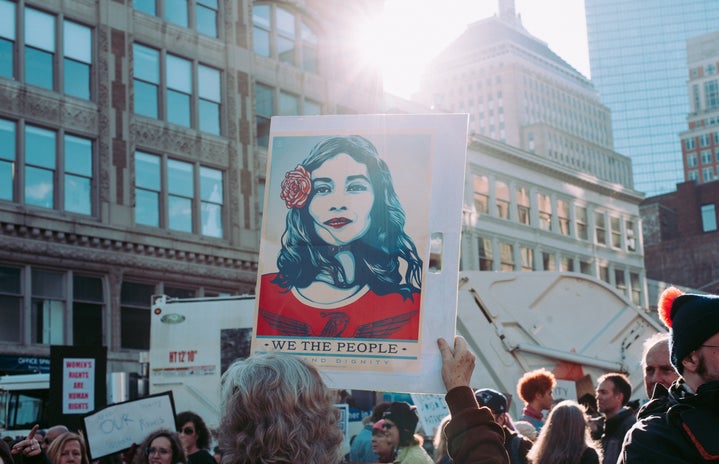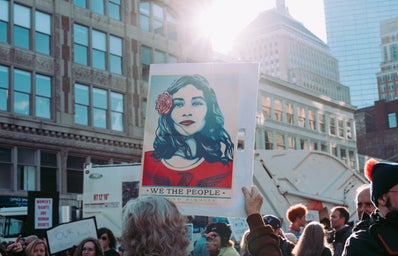It is no surprise that people are shocked that gay conversion therapy is still prevalent in 2019. What is more surprising is that Ohio is one of many states that is still pending a bill to ban it. Only a handful of cities have banned this dangerous practice, and it’s unknown if there are conversion therapists operating in Cuyahoga County, according to Into More. Even though I didn’t grow up in Akron, it is scary to think the LBGTQ+ community here could potentially be at risk for such torturous experiences.
If you are unfamiliar with the term conversion therapy, also known as reparative therapy, it is essentially the discredited practice of changing someone’s sexual orientation. Gender identity and gender expression are also a focus, and typically “therapists” or “doctors” work on patients to try to convert them to a heterosexual orientation. The Washington Post stated back in 2018, “Approximately 698,000 LGBTQ Americans have undergone some form of conversion therapy…over the next few years, an estimated 20,000 additional LGBTQ youth will work with a licensed professional to undergo conversion therapy, and 57,000 more will seek conversion therapy treatment from religious leaders.” You would think this practice would be seen as immoral, but homophobia is still deeply rooted in today’s society.
It was during the 19th century when homosexuality was deemed as a curable illness. Doctors and psychiatrists began to address it through various experiments and treatments. According to History, there were testicle transplants in the 1920s but later Sigmund Freud, an Austrian neurologist and the founder of psychoanalysis, hypothesized that humans are born innately bisexual and that homosexual people become gay because of their conditioning. Freud also claimed that homosexuality was a form of “immaturity” where normal sexual instinct of childhood persists into adulthood, according to the US National Library of Medicine. However, Freud himself did not think homosexuality was an illness and didn’t think it needed to be treated.
A patient undergoing electroconvulsive therapy circa 1950s. (Credit: Carl Purcell/Three Lions/Getty Images)
Other forms of treatment included induced vomiting, electric shocks, exorcisms and lobotomies (an operation where an incision is made in the prefrontal lobe of the brain). Moving later into the 20th century, there were gay conversion camps and conferences still popping up throughout the US. “LGBTQ people were isolated from family and friends, hypnotized, told to pray until their homosexuality subsided, instructed to beat effigies of their parents, mocked, coached on “proper” gender roles, and told their sexuality was unnatural and sinful,” says History. Due to the gay rights movement in the 1960s and ‘70s, and the American Psychiatric Association removing homosexuality from its list of mental disorders, there finally became a path towards direct action and change of these practices.
Massachusetts became the 16th state to pass a bill to ban conversion therapy for minors. As of March 11, 2019, the Human Rights Campaign stated that, “16 states ban LGBTQ youth from conversion therapy through licensing restrictions, which prevent licensed mental health service professionals from conducting conversion therapy on youth under age 18.” It wasn’t even that long ago in 2015 when the Obama administration called for an end to conversion therapy. So what Massachusetts is doing is taking a step forward in regard to protecting the rights and lives of the LGBTQ+ community.
There are cases of mental and sexual abuse within conversion therapy, and people pretending to be cured just so they can leave. Therapy also leaves people with mental health problems, pain, and long-lasting shame. According to the US National Library of Medicine, “Patients who do not change may feel worse and blame themselves, question their faith or their motivation. This may lead to depression, anxiety, and suicidal ideation.”
Conversion therapy is not only unethical and cruel to those who have came out or to those who struggle to come out, but it’s also very much fatal as well. “Lesbian, gay, and bisexual youth who were rejected by their families and caregivers due to their identities were more than eight times more likely to have attempted suicide when compared to youth from accepting and affirming families and caregivers,” as reported by the Trevor Project.
There is still work to be made when it comes to the LGBTQ+ community. You cannot change someone’s life that was not chosen. We need to do better when it comes to accepting people as their authentic selves, and we must hope for a future where all states ban this practice for good.



